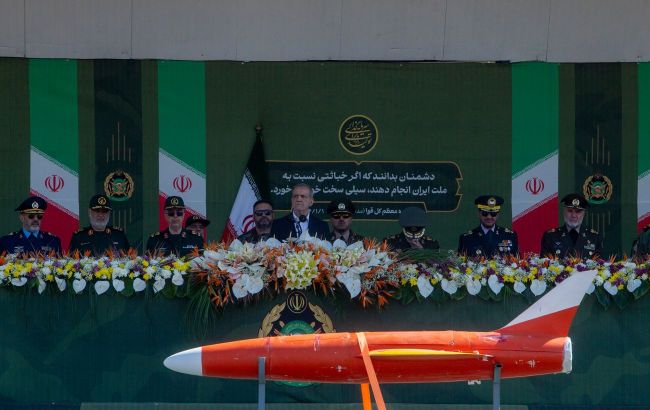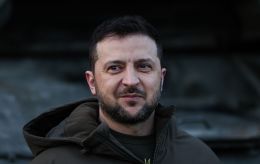Tehran struggles to cope, Iran’s president proposes moving capital
 Iranian President Masoud Pezeshkian (Photo: Getty Images)
Iranian President Masoud Pezeshkian (Photo: Getty Images)
Iranian President Masoud Pezeshkian stated that due to the critical water crisis and land subsidence, the country is forced to consider relocating the capital from Tehran to the southern regions, according to Тhe Guardian.
During a speech in Hormozgan Province, located on the Persian Gulf coast, Masoud Pezeshkian explained that excessive urban expansion, water shortages, and rapid land subsidence are creating a dangerous situation for the 10-million-strong metropolis, which consumes about 25% of the country’s water resources.
"The problems the country is currently facing require us to direct the development path towards the Persian Gulf. Tehran, Karaj, and Qazvin are currently facing a water crisis, and this crisis cannot be easily solved," Pezeshkian said.
The president said that as early as last year, he had raised the issue of relocating the capital with Iran’s Supreme Leader, Ayatollah Ali Khamenei. Despite criticism at the time, he is now convinced that the resource situation has become so severe that moving the capital is inevitable.
Tehran – a city 'drying up'
Tehran’s water supply has traditionally relied on dams (70% of reserves) and underground aquifers (30%). However, the city has grown at an extremely rapid pace and has now become a metropolis with a population of over 10 million people.
Currently, reduced rainfall, increased evaporation, and the depletion of aquifers have caused shortages and dangerous land subsidence.
According to Pezeshkian, in some areas, the ground is sinking by up to 30 cm per year, which he called a disaster.
“This is a disaster and shows that the water beneath our feet is running out,” he said.
Critical water situation
According to official data, in 2024 Iran received only 140 mm of rainfall, compared to the normal 260 mm - a decrease of 50–60%. In 2025, the situation is expected to be even worse, with around 100 mm of rainfall.
The reduction of water in reservoirs, the drying of wells, and the high costs of transporting water from other regions are making a centralized water supply for Tehran increasingly difficult.
“If we want to transport water from this area to Tehran, the cost per cubic meter will be up to €4,” the president said.
Iran’s new capital – near the Persian Gulf
Masoud Pezeshkian emphasized the strategic advantages of the southern regions, particularly Hormozgan. Its location by the sea provides access to open waters, as well as opportunities for trade and economic development.
“If we have a different view of the capacities of this region, we can create a very prosperous and advanced region. It is not good enough to accept the current situation and not design a scientific, accurate and indigenous map for the future,” he stressed.
Incidentally, the issue of relocating Iran’s capital has been raised before. Former President Hassan Rouhani even developed several action plans, but they were never implemented.
Meanwhile, Germany’s Foreign Ministry stated that the UN will reimpose sanctions on Iran. The reason is the failure of negotiations on a nuclear deal between European countries and Tehran.
This comes a few months after Israel and the US carried out airstrikes targeting Iran’s infrastructure, including key nuclear facilities.

